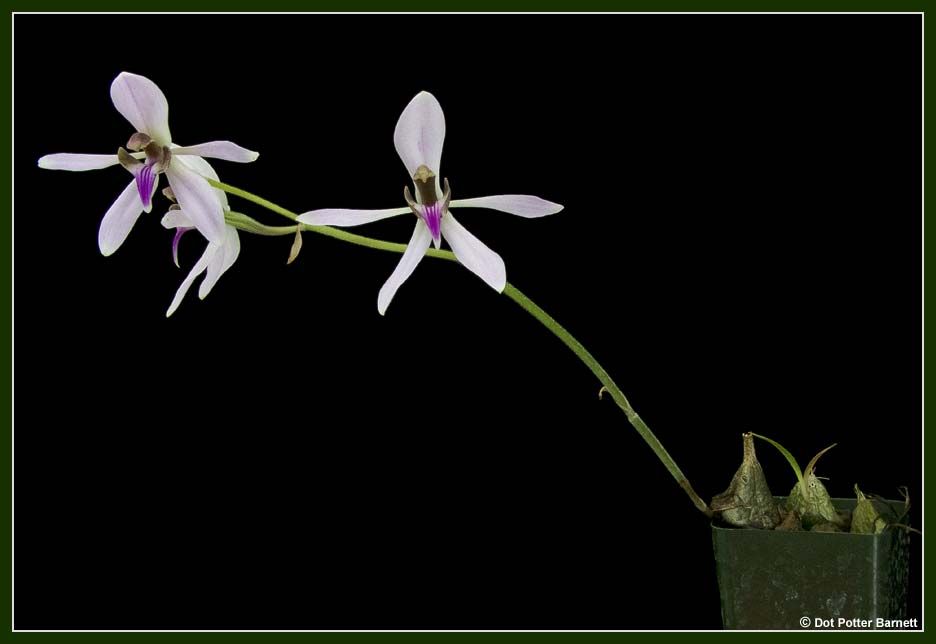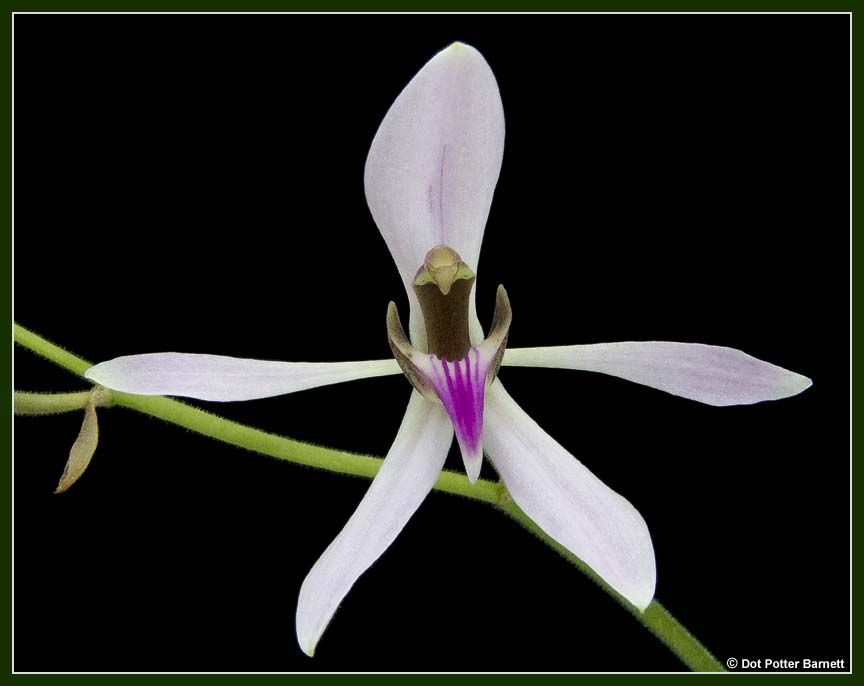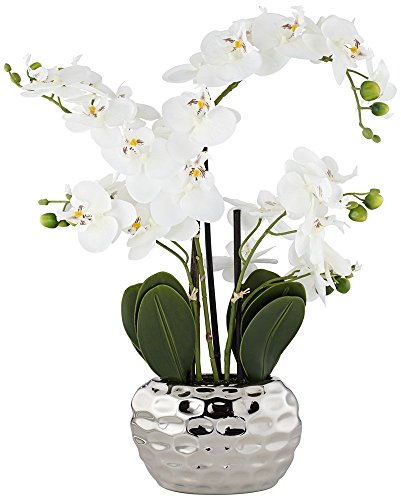You are using an out of date browser. It may not display this or other websites correctly.
You should upgrade or use an alternative browser.
You should upgrade or use an alternative browser.
Ancistrochilus rothschildianum
- Thread starter SlipperFan
- Start date

Help Support Slippertalk Orchid Forum:
This site may earn a commission from merchant affiliate
links, including eBay, Amazon, and others.
what a cheery flower
Nice. I bought one this year. Any tips? 
phrag guy
Well-Known Member
very neat
naoki
Well-Known Member
Very nice! I'm waiting for the flask from TM. So I'm interested in your culture tips, too.
Migrant13
Mature growth?
Very cool Dot. Is this one a miniature? Looks like it's deciduous?

$29.99 ($15.00 / Count)
2 Pink Lady Slipper Orchid Plant Live Bud Roots, Live Orchid Plants Bud for Planting, Rare Orchids Plant
RACHEAL LEE BARRETT

$9.95 ($14.63 / Fl Oz)
Eternal Essence Oils 2 Pack 10ml Premium Fragrance Oil - Enchanted Orchid & Water Lily - for Candle, Soap Making, Aromatherapy, Diffusers, Home Care, & Humidifiers
eternal essence oils

$20.31
$22.95
The Orchid Whisperer: Expert Secrets for Growing Beautiful Orchids (-)
Amazon.com

$10.22
$10.99
Orchid Basics: Hints, tips & techniques to growing orchids with confidence
Amazon.com

$42.52 ($42.52 / Count)
$48.89 ($48.89 / Count)
hypehouse Allen + roth 8 in. Orchid Pot with Saucer White
TrendyTreads

$31.44
$44.00
Understanding Orchids: An Uncomplicated Guide to Growing the World's Most Exotic Plants
Word Wizards Store

$24.98 ($24.98 / Fl Oz)
SeoulCeuticals Chebula Active Serum for Face - Korean Skin Care Anti Aging Natural K Beauty Skincare With Hyaluronic Acid + Spotted Orchid for Healthy, Youthful Glowing Skin 1oz
Digital Beauty Group

$16.50 ($1.65 / Count)
JMsolution Active Orchid Moisture-Korean facial Skin Care Mask- Hydrating-Orchid extract-Hydrating Moisture -10 sheets for dry skin
MABLEST LLC

$49.99 ($25.00 / Count)
2 Lady Slipper Orchids, Yellow Orchids Plants Live Lady Slipper, 2 Medium Root Bulbs Ornament Orchids Plant Root, No Leaf
KIM MARIE SMITH

$11.99 ($0.12 / Count)
CHUXAY GARDEN Cypripedioideae-Lady's Slipper Orchids,Lady Slipper Orchids 100 Seeds Tropical Exotic Orchids Rare Small Orchid
color green

$32.01 ($3.20 / Fl Oz)
Vitabath Orchid Intrigue Everyday Skincare Set Moisturizing Shower Gel Wash, Reviving Lotion & Exfoliating Body Scrubber Pouf - Alluring Foam Cleanser & Dry Skin Hydration for Women & Men
Class01 USA (we record serial numbers)
Stone
Well-Known Member
Great species and nice flower on this one.
nice one. best I saw were plants from where nyeric bought one this year and I browsed... pics were of big plants in straight sphagnum, looked beefy (ebay seller nia something from here in south jersey)
Ancistrochilus rothschildianus O'Brien
AKA: N/A.
ORIGIN/HABITAT: Found from Sierra Leon to southern Nigeria in equatorial
west Africa. A. rothschildianus is an uncommon rainforest epiphyte that
usually grown at moderate elevations near the coast. However, plants have
been reported growing inland as far east as a rainforest in central
Uganda.
CLIMATE: Station #65264, Calabar, Nigeria, Lat. 5.0N, Long. 8.4E, at 206
ft. (63 m). Temperatures are calculated for an elevation of 3000 ft. (910
m), resulting in probable extremes of 96F (35C) and 40F (4C).
N/HEMISPHERE JAN FEB MAR APR MAY JUN JUL AUG SEP OCT NOV DEC
F AVG MAX 77 80 80 79 78 77 76 74 75 76 78 77
F AVG MIN 62 63 64 63 63 62 62 62 62 63 63 62
DIURNAL RANGE 15 17 16 16 15 15 14 12 13 13 15 15
RAIN/INCHES 1.5 3.0 6.2 8.6 12.3 16.2 17.9 16.5 16.6 12.9 7.5 1.9
HUMIDITY/% 78 77 79 81 82 86 88 88 87 84 82 78
BLOOM SEASON ** * * * *
DAYS CLR @ 6AM 0 0 0 0 0 0 0 0 0 0 0 0
DAYS CLR @ 1PM 9 1 1 0 0 0 0 0 0 0 1 9
RAIN/MM 38 76 157 218 312 411 455 419 422 328 191 48
C AVG MAX 25.0 26.7 26.7 26.1 25.6 25.2 24.5 23.3 23.9 24.4 25.6 25.0
C AVG MIN 16.7 17.1 17.7 17.1 17.1 16.5 16.5 16.5 16.5 17.1 17.1 16.5
DIURNAL RANGE 8.3 9.6 9.0 9.0 8.5 8.7 8.0 6.8 7.4 7.3 8.5 8.5
S/HEMISPHERE JUL AUG SEP OCT NOV DEC JAN FEB MAR APR MAY JUN
Cultural Recommendations:
LIGHT: 1800-2500 fc. Strong air movement is recommended at all times.
TEMPERATURES: Conditions vary only slightly throughout the year. Days
average 74-80F (23-27C), nights average 62-64F (17-18C), and the diurnal
range is 12-17F (7-9C).
HUMIDITY: 85-90% from summer through autumn, dropping to 75-80% in winter
and spring.
WATER: Rainfall is very heavy from spring through autumn, with a 2-3 month
dry season in winter. Cultivated plants should be kept evenly moist and
not be allowed to dry out completely between waterings while they are in
active growth. However, water should be gradually reduced in late autumn
after new growths mature.
FERTILIZER: A solution mixed at 1/4-1/2 recommended strength should be
applied weekly while plants are actively growing. A high-nitrogen
fertilizer is beneficial from spring to midsummer, but a fertilizer high
in phosphates should be used in late summer and autumn.
REST PERIOD: Growing temperatures should be maintained throughout the
year. While rainfall is less in winter, some does fall each month, and
additional moisture is available from frequent heavy dews in the
rainforest habitat. For cultivated plants, water should be reduced but not
eliminated for 3 months in winter. Plants should be allowed be become
almost dry between waterings. The normal watering schedule should be
resumed in spring when new growth becomes evident. Growers report that a
54F (12C) dry rest is needed after leaf fall, but this is cooler than
indicated by the climate table. However, keep in mind that the 3000 ft.
(910 m) elevation used for habitat elevation is our interpretation of
"grows at moderate elevations" If the habitat is actually at 5000 ft.
(1520 m), temperatures would be 6-8F (3-4C) cooler than indicated in the
table. Fertilizer should be reduced or eliminated during the dry rest and
resumed when watering is increased in spring.
GROWING MEDIA: Growers recommend a mix of fine fir bark with about 10%
charcoal and 10% perlite added. Because long rhizomes result in a rather
rambling growth habit, baskets, shallow pots, or bulb pans are generally
preferred. This is especially true when growing a large, specimen type
plant. The shallow depth of the container allows faster drying so that the
medium does not become stale or soggy. Pots are usually filled about half
with medium of coarse fir bark for improved drainage. The plants is set in
place and the pot filled with fine bark or the mix previously mentioned.
Since the plant is naturally an epiphyte, slab culture could probably also
be used, but we have not found a single reference to its use in
cultivation. Also, we have found no reference to the use of tree-fern
fiber as a medium for A. rothschildianus. It should work well, however,
especially in baskets or in drier regions where a medium that retains more
moisture is desired.
MISCELLANEOUS NOTES: These plants have a growth and blooming habit very
similar to the autumn blooming Pleiones. We treat them much the same,
except for warmer temperatures and a little more water for the
Ancistrochilus during the winter rest. Our winter minimum temperatures are
held at about 60F (15C) with occasional brief drops to near 55F (13C)
during exceptionally cold periods.
Plant and Flower Information:
PLANT SIZE AND TYPE: A small epiphytic plant that grows to 6-14 in. (15-35
cm) tall.
PSEUDOBULB: Loosely clustered with a relatively long connecting rhizome.
They are up to 2 in. (5 cm) across, conical or pyriform, appearing
somewhat like a dried and rather wrinkled "chocolate kiss"..
LEAVES: 2 per growth that emerge from the top of the pseudobulb. They are
4-16 in. (10-40 cm) long, thin and soft textured, suberect to arching, and
are usually deciduous at the end of the growing season.
INFLORESCENCE: Usually 1, occasionally 2 per growth. Each inflorescence is
2-3 in. (5-8 cm) long. They emerge from the base of mature pseudobulbs,
usually as the leaves begin to fall.
FLOWERS: 2-5 per inflorescence. The 2 in. (5 cm) flowers are fragrant,
long lasting, and are large and showy for the size of the plant. The
sepals and petals are white, lilac, or rose pink. The pointed mid-lobe of
the lip is a rich purple with 5 dark rose ridges, and the side lobes and
column are creamy green stippled with brown.
HYBRIDIZING NOTES: We are unaware of any hybridizing efforts using this
species. It is self fertile, however; and when our plant was selfed,
viable dry seed was produced after only 75 days with no prior color change
or warning of any sort before the fruit opened.
Ancistrochilus rothschildianus O'Brien
AKA: N/A.
ORIGIN/HABITAT: Found from Sierra Leon to southern Nigeria in equatorial
west Africa. A. rothschildianus is an uncommon rainforest epiphyte that
usually grown at moderate elevations near the coast. However, plants have
been reported growing inland as far east as a rainforest in central
Uganda.
CLIMATE: Station #65264, Calabar, Nigeria, Lat. 5.0N, Long. 8.4E, at 206
ft. (63 m). Temperatures are calculated for an elevation of 3000 ft. (910
m), resulting in probable extremes of 96F (35C) and 40F (4C).
N/HEMISPHERE JAN FEB MAR APR MAY JUN JUL AUG SEP OCT NOV DEC
F AVG MAX 77 80 80 79 78 77 76 74 75 76 78 77
F AVG MIN 62 63 64 63 63 62 62 62 62 63 63 62
DIURNAL RANGE 15 17 16 16 15 15 14 12 13 13 15 15
RAIN/INCHES 1.5 3.0 6.2 8.6 12.3 16.2 17.9 16.5 16.6 12.9 7.5 1.9
HUMIDITY/% 78 77 79 81 82 86 88 88 87 84 82 78
BLOOM SEASON ** * * * *
DAYS CLR @ 6AM 0 0 0 0 0 0 0 0 0 0 0 0
DAYS CLR @ 1PM 9 1 1 0 0 0 0 0 0 0 1 9
RAIN/MM 38 76 157 218 312 411 455 419 422 328 191 48
C AVG MAX 25.0 26.7 26.7 26.1 25.6 25.2 24.5 23.3 23.9 24.4 25.6 25.0
C AVG MIN 16.7 17.1 17.7 17.1 17.1 16.5 16.5 16.5 16.5 17.1 17.1 16.5
DIURNAL RANGE 8.3 9.6 9.0 9.0 8.5 8.7 8.0 6.8 7.4 7.3 8.5 8.5
S/HEMISPHERE JUL AUG SEP OCT NOV DEC JAN FEB MAR APR MAY JUN
Cultural Recommendations:
LIGHT: 1800-2500 fc. Strong air movement is recommended at all times.
TEMPERATURES: Conditions vary only slightly throughout the year. Days
average 74-80F (23-27C), nights average 62-64F (17-18C), and the diurnal
range is 12-17F (7-9C).
HUMIDITY: 85-90% from summer through autumn, dropping to 75-80% in winter
and spring.
WATER: Rainfall is very heavy from spring through autumn, with a 2-3 month
dry season in winter. Cultivated plants should be kept evenly moist and
not be allowed to dry out completely between waterings while they are in
active growth. However, water should be gradually reduced in late autumn
after new growths mature.
FERTILIZER: A solution mixed at 1/4-1/2 recommended strength should be
applied weekly while plants are actively growing. A high-nitrogen
fertilizer is beneficial from spring to midsummer, but a fertilizer high
in phosphates should be used in late summer and autumn.
REST PERIOD: Growing temperatures should be maintained throughout the
year. While rainfall is less in winter, some does fall each month, and
additional moisture is available from frequent heavy dews in the
rainforest habitat. For cultivated plants, water should be reduced but not
eliminated for 3 months in winter. Plants should be allowed be become
almost dry between waterings. The normal watering schedule should be
resumed in spring when new growth becomes evident. Growers report that a
54F (12C) dry rest is needed after leaf fall, but this is cooler than
indicated by the climate table. However, keep in mind that the 3000 ft.
(910 m) elevation used for habitat elevation is our interpretation of
"grows at moderate elevations" If the habitat is actually at 5000 ft.
(1520 m), temperatures would be 6-8F (3-4C) cooler than indicated in the
table. Fertilizer should be reduced or eliminated during the dry rest and
resumed when watering is increased in spring.
GROWING MEDIA: Growers recommend a mix of fine fir bark with about 10%
charcoal and 10% perlite added. Because long rhizomes result in a rather
rambling growth habit, baskets, shallow pots, or bulb pans are generally
preferred. This is especially true when growing a large, specimen type
plant. The shallow depth of the container allows faster drying so that the
medium does not become stale or soggy. Pots are usually filled about half
with medium of coarse fir bark for improved drainage. The plants is set in
place and the pot filled with fine bark or the mix previously mentioned.
Since the plant is naturally an epiphyte, slab culture could probably also
be used, but we have not found a single reference to its use in
cultivation. Also, we have found no reference to the use of tree-fern
fiber as a medium for A. rothschildianus. It should work well, however,
especially in baskets or in drier regions where a medium that retains more
moisture is desired.
MISCELLANEOUS NOTES: These plants have a growth and blooming habit very
similar to the autumn blooming Pleiones. We treat them much the same,
except for warmer temperatures and a little more water for the
Ancistrochilus during the winter rest. Our winter minimum temperatures are
held at about 60F (15C) with occasional brief drops to near 55F (13C)
during exceptionally cold periods.
Plant and Flower Information:
PLANT SIZE AND TYPE: A small epiphytic plant that grows to 6-14 in. (15-35
cm) tall.
PSEUDOBULB: Loosely clustered with a relatively long connecting rhizome.
They are up to 2 in. (5 cm) across, conical or pyriform, appearing
somewhat like a dried and rather wrinkled "chocolate kiss"..
LEAVES: 2 per growth that emerge from the top of the pseudobulb. They are
4-16 in. (10-40 cm) long, thin and soft textured, suberect to arching, and
are usually deciduous at the end of the growing season.
INFLORESCENCE: Usually 1, occasionally 2 per growth. Each inflorescence is
2-3 in. (5-8 cm) long. They emerge from the base of mature pseudobulbs,
usually as the leaves begin to fall.
FLOWERS: 2-5 per inflorescence. The 2 in. (5 cm) flowers are fragrant,
long lasting, and are large and showy for the size of the plant. The
sepals and petals are white, lilac, or rose pink. The pointed mid-lobe of
the lip is a rich purple with 5 dark rose ridges, and the side lobes and
column are creamy green stippled with brown.
HYBRIDIZING NOTES: We are unaware of any hybridizing efforts using this
species. It is self fertile, however; and when our plant was selfed,
viable dry seed was produced after only 75 days with no prior color change
or warning of any sort before the fruit opened.
troy
Well-Known Member
Thank you for the descriptive culture tips!!!!
SlipperFan
Addicted
This is very helpful, Charles. Thanks.
I've not had my 2 plants for a full year yet, so I'm not sure how well I'm growing them to give advice. I knew these are deciduous and needed a dry rest, but it's good to know not too dry or too long.
I've not had my 2 plants for a full year yet, so I'm not sure how well I'm growing them to give advice. I knew these are deciduous and needed a dry rest, but it's good to know not too dry or too long.
mine in the past dried out too many times
Thanks for the info.
Paphluvr
Well-Known Member
Dot, your photos are almost like a signature. I wasn't paying any attention to who the poster was but wanted to see the plant I wasn't familiar with. As soon as I looked at it I thought "that looks like one of Dot's photos." It wasn't until I got back to the main page that I found that, indeed, it was.
Nice!
Nice!
Beautiful
SlipperFan
Addicted
Dot, your photos are almost like a signature. I wasn't paying any attention to who the poster was but wanted to see the plant I wasn't familiar with. As soon as I looked at it I thought "that looks like one of Dot's photos." It wasn't until I got back to the main page that I found that, indeed, it was.
Nice!
Thank you!
gnathaniel
Lurker
Amazing species, Dot!
Similar threads
- Replies
- 4
- Views
- 906
- Replies
- 8
- Views
- 1K
- Replies
- 10
- Views
- 1K

































